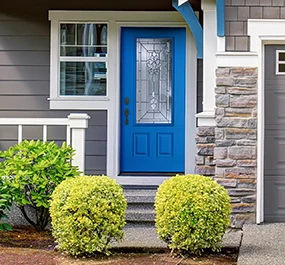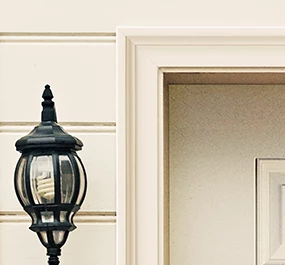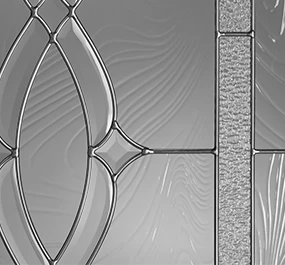Like many other facets of your home, when a door is working properly, you’ll rarely notice it’s doing its job—however, when you are faced with a misaligned door, one that won’t open and close properly, either due to basic wear and tear or improper installation, it’ll prove an inconvenience you can’t avoid entering and exiting through.
Doors can settle into their hinges, experience other wear-and-tear, and in extreme cases, warp from weather. So how do you pinpoint the exact cause of your misaligned door? Continue reading to learn how to identify the issue and how to then fix your misaligned door.
How to identify a misaligned door
When you notice your latch isn’t aligned with its corresponding strike plate hole, you can try a number of assessments. If the top of your door is scraping against the top of the door jamb, your top hinge screws may need tightening.
One trick, the “lipstick test,” can help you identify the misalignment as well as how severe it is. Starting with your door open, mark the edge of the deadbolt with lipstick, or another easily removable solution, then turn the knob until the latch retracts, close your door and release where the latch barely touches the strike plate. Where the mark lines up—or doesn’t—in relation to the door can help identify the issue.
How to fix a small misalignment
How do you fix a misaligned door if the issue is minor? If the mark made earlier is too high for the latch, use a screwdriver to tighten the door’s bottom hinges. If it’s too low, you can raise the latch.
Using your screwdriver, tighten the screws that hold the hinge to the door jamb—even a little bit can help realign the door.
The strike plate may be the issue
If the mark you made is more than ⅛ inch above or below the strike plate hole, it might be an improperly installed or damaged strike plate causing the misalignment. This is most likely the issue if your door won’t latch properly and the latch is not centered on the strike plate.
Use either your screwdriver or a drill to tighten the screws on the strike plate. While you can’t move a door latch up or down, you may be able to move the strike plate enough with a hammer and screwdriver to align it properly.
Start by loosening the strike plate screws, then insert the screwdriver into the strike plate hole. Use the hammer to tap the top of the screwdriver and carefully maneuver the strike plate back into alignment. You will know when your door is aligned when the gap between the door and the door frame is evenly spaced from top to bottom of the door.
If the strike plate needs to be shifted entirely, remove it with the screwdriver or drill and create new screw holes. While the existing screw holes might conflict with the new ones you’re making, you can prevent potential shifting by filling the old holes with wood dowels that match the diameter of the screw holes in question. Fix the dowels in with wood glue, lightly tap into the holes and let dry for a few hours before shaving the dowels down so they’re flush with the jamb. Finally, move your strike plate into its new position and fix the misaligned door accordingly.
The last resort: removing the door hinges
So how do you fix a misaligned door if the issue isn’t minor? You may have to resort to removing the door’s hinges & reattaching it. Remove the hinge pins of a closed door by tapping on the pin with the nail until they pop out enough that you can manually remove the pins. Be sure to lay down cardboard or a mat to protect the floors before prying the door off of its hinges.
After realigning the strike plate or offending part of the door jamb, start by aligning the knuckles of the door with the top hinge and then re-engage the pins with the hinges by tapping them in place.
You can also check out Plastpro’s durable fiberglass doors and PF Frames that are long lasting and require little maintenance. Visit the Where to Buy page to find the closest distributor for fiberglass doors, PF Frames, and more.



